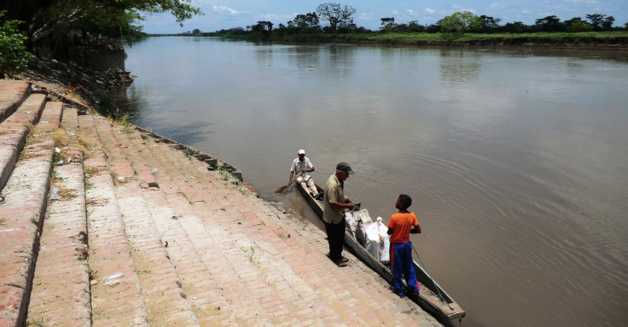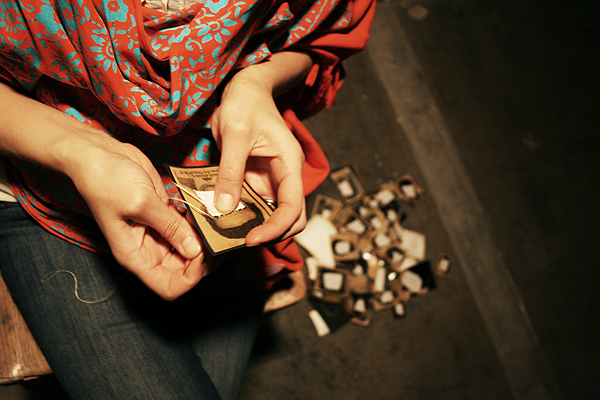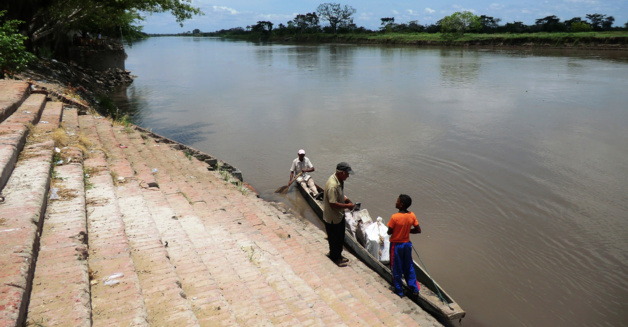
The Magdalena river – courtesy of Ben Box
Every day, Colombia’s main river, the 1,500-kilometer-long Magdalena, transports lifeless bodies. Every day, these bodies are collected along the banks of the river by fishermen. And every day the residents of neighbouring towns adopt these bodies in order to grant them a burial. Found without a clear identity, the dead are named the Ningún Nombre, the “nameless” in Spanish. The adoptive families take their responsibilities to heart, caring for the bodies by bringing them flowers and reciting them prayers. Some people even allow themselves to give names to the bodies and talk to them.
The 50,000 residents of the village of Puerto Berrio have gradually become familiar with the idea of collecting the bodies in the river. All the village’s dead now have adoptive parents. Faith is extremely important to these Colombians who sometimes even argue about who will rescue a Ningún Nombre and add to their good deeds. “El Pancho” is the nickname given to Don Francisco Luis Mesa, an extraordinary fisherman from Puerto Berrio. This man has spent over 25 years of his life gathering the bodies from the river before putting them in graves and carrying out a ceremony.
While this situation appears gruesome at first sight, it has had remarkable and unusual effects. Despite these atypical displays of generosity, the sad truth should not be forgotten. These dead are all the victims of the Colombian conflict, already over 30 years long.
An uninterrupted, violent conflict
For the past three decades, the communist guerillas have opposed the paramilitaries of the extreme right. Caught between the two rival groups in the conflict are the residents of neighbouring populations, who are attacked and abused. The majority of them are forced to flee, leaving everything behind. The less fortunate lose their lives. Then their bodies are thrown into the Magdalena. But it would be misleading to claim that all the bodies in the river have been identified as victims of the Colombian conflict, the reason being that a large majority of them have not been documented in the record of missing people.

Courtesy of Mandy Cano Villalobos
Valuable help from the government
In recent years, more and more enquiries have emerged as grieving families seek to recover the bodies of their deceased loved ones. To deal with these requests, the government and the president of Colombia, Juan Manuel Santos, have deployed more resources. The head of state has improved the research unit, thanks to which nearly 10,000 cadavers have been identified. A growing number of officers and medical examiners are mobilized each day, both to contact families of the cadavers but also to determine the cause of their death.
For those who have been exiled, the government is attempting as best as it can to indemnify victims by granting them compensation for the many hectares of land it has torn from them. One thing is certain: the government is working actively to stop the Colombian conflict, which is calming down from year to year, but is not yet over.
Support from the International Committee of the Red Cross (ICRC)
Like “El Pancho” of Puerto Berrio, Chaín, the gravedigger in the village of Bocas de Satinga, also picks up bodies floating on the river. But Chaín’s act is even more unusual. He buries all the unidentified bodies in a very precise spot in the village cemetery. He carefully establishes the exact placement of the Ningún Nombres’ graves. All available information is written on a cement board which is set up above each grave to help grieving families in their searches.
But the ICRC has not stopped there. Its current objective is to bring in medical examiners to carry out the exhumation and identification of the bodies. The ICRC is also working towards renovating the morgue of Bocas de Satinga as well as constructing refrigeration chambers for the Ningún Nombre, in order to facilitate the study of fingerprints and other types of analysis that could allow more bodies to be identified.





























